The Windows 8 Interface
As with many previous versions of Windows, Windows 8 introduces a new user interface. Unlike previous versions, however, Windows 8’s new interface is radically different from what we’ve come to know as the “traditional” Windows user interface. Clearly designed with the tablet and handheld market in mind — at least in large part — Windows 8 gives you a simplified, clean user experience with tiles providing access to applications.
The Start screen
Figure 1.1 shows the Windows 8 Start screen, a key component of the new Windows 8 interface. You’ll learn how to navigate the new Windows 8 interface in Chapter 2. For now, understand that the tiles on the Start page, like icons on the traditional Windows desktop, give you quick access to your programs and documents. Tap the Internet Explorer tile, for example, and Internet Explorer opens. Likewise, click or tap the Photos tile, and the Photos app opens, enabling you to view the photos stored on your computer, or in SkyDrive, Facebook, Flickr, and other locations.
FIGURE 1.1 The Windows 8 Start screen
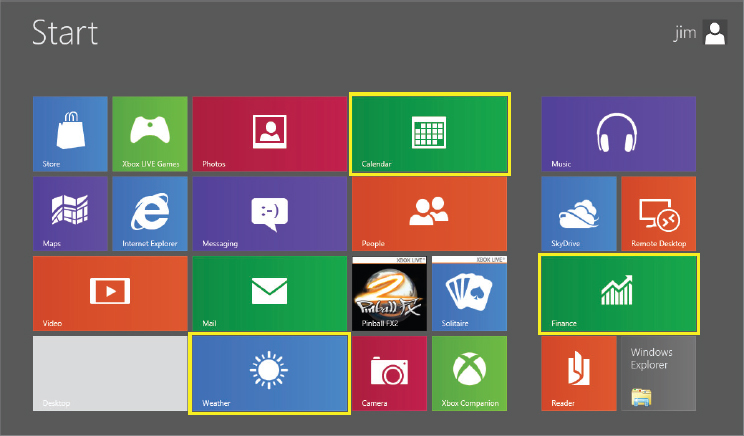
A key difference between Windows 8 tiles and desktop icons, however, is that tiles can be live, showing data that changes dynamically. The Mail tile, for example, shows a preview of new messages in your Inbox (see Figure 1.2). The Calendar tile shows a preview of meetings and events in your Calendar, the Finance tab shows stock prices, and so on. The advantage is that the tiles can give you information at a glance that you would otherwise have to open a program to view.
FIGURE 1.2 Live tiles show dynamic data.
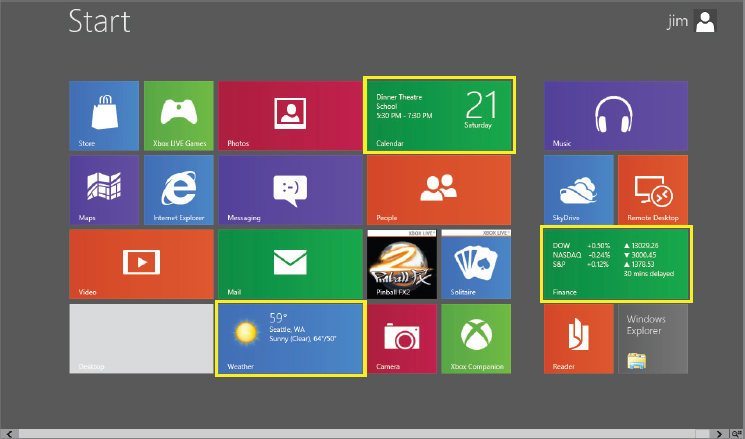
The Windows 8 UI isn’t just about the Start page or its tiles, however. Windows 8 apps generally follow the same clean, streamlined look as the Windows 8 interface itself. For example, Figure 1.3 shows the Finance application. There is no window border, no controls in the title bar, and no visible menu. While a Windows 8 app can include any number of interface features specific to the application, in general the interface will be simple and streamlined like the Finance app, if not more so.
FIGURE 1.3 A Windows 8 app typically has a clean, simplified interface.
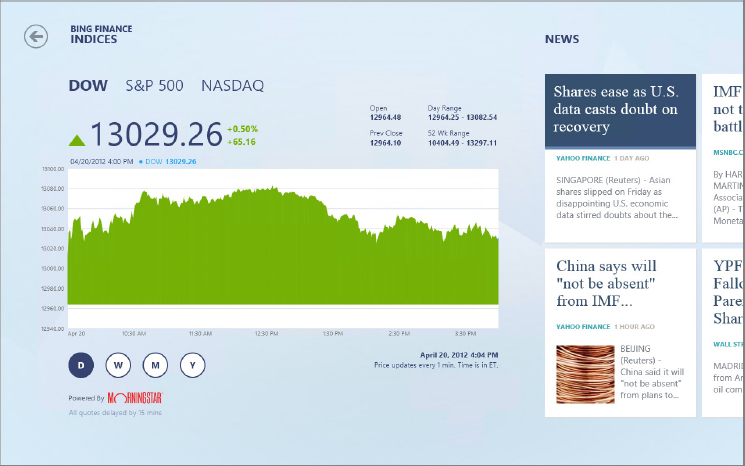
Although the Windows 8 interface is a departure from the traditional Windows desktop, the combination of live tiles, clean look, and capability to put your most frequently used apps and documents in one area for quick access makes Windows 8 a winner, particularly for tablets and handheld devices.
The Lock Screen
The Windows 8 Lock Screen appears when the computer is locked (see Figure 1.4). The Lock Screen shows the current day and time, battery status, and network status, all on a photo background. The Lock Screen can also display notifications from applications. To display the logon screen, slide the Lock Screen up.
FIGURE 1.4 The Lock Screen
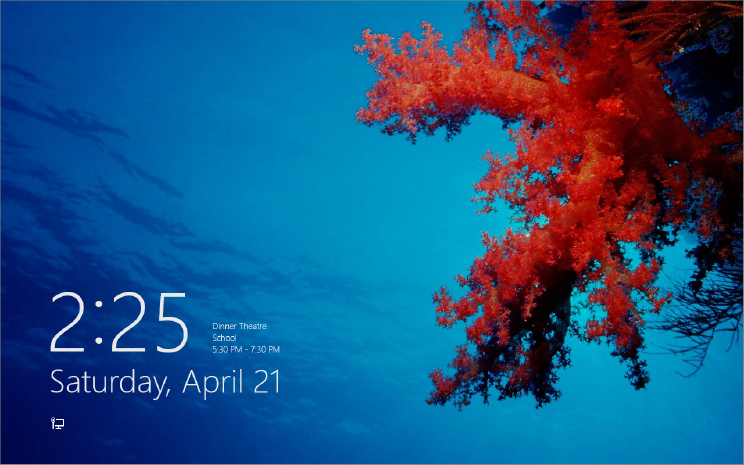
The Charms Bar
The Charms Bar appears at the right edge of the display (see Figure 1.5) when you move the mouse to the bottom-right or upper-right corner of the display. You can also display the Charms Bar by swiping in from the right edge of the display.
FIGURE 1.5 The Charms Bar
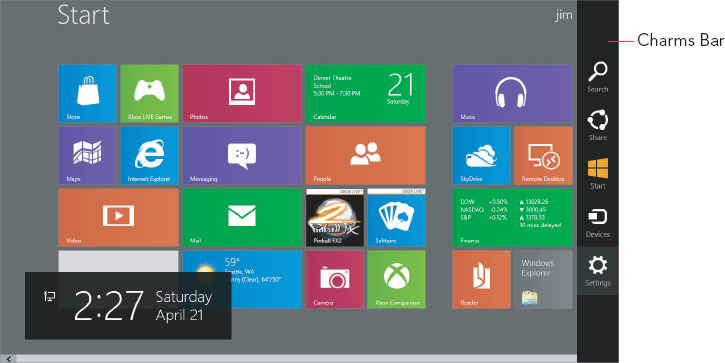
The Charms Bar gives you quick access to Search, Settings, and other options and features.
